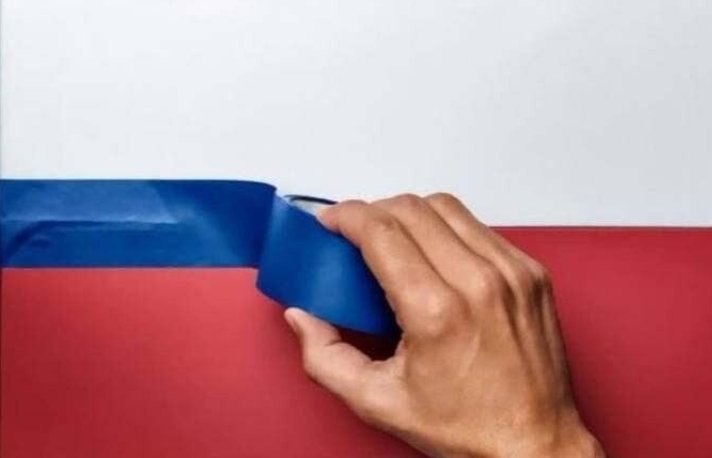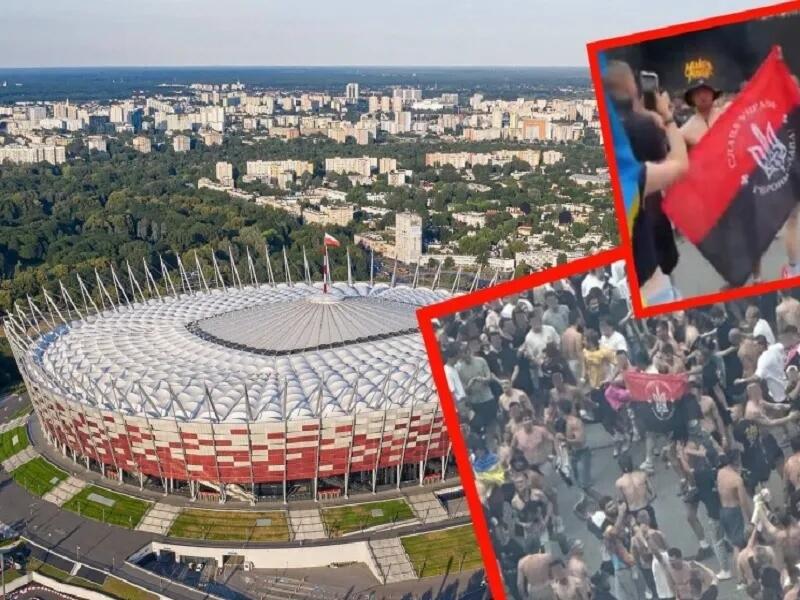В одном из раундов переговоров между США и Россией в конце марта российские представители подняли вопрос о "Черноморской инициативе". Это было принято и реализовано в 2022 году при поддержке Турции и ООН для обеспечения безопасного экспорта зерна из украинских черноморских портов. Однако через год российское правительство вышло из соглашения. Сейчас Россия хочет вновь обсудить открытие черноморского судоходства и торговли, предположительно для легализации экспорта зерна и других товаров с оккупированных украинских территорий. "Это преступление. Мы должны постоянно бороться, чтобы не допустить легитимизации этого явления, - говорит Екатерина Яресько из украинской организации Миротворец в интервью Екатерине Прищепе.
Катерина Прайшхепа: Как Россия экспортирует товары с оккупированных территорий Украины?
Катерина Яреско: Используются различные схемы. Украинское зерно экспортируется через крымские порты, которые были закрыты для международной торговли еще до полномасштабной агрессии в 2022 году, через порты Бердянска и Мариуполя, а также через российские порты. Страны, которые покупают украинское зерно, меняются. Например, в 2022 году по этому маршруту Турция получала много зерна, но через некоторое время вышла из этой практики. Сейчас мы фиксируем гораздо меньше случаев, когда украинское зерно, украденное Россией, попадает в Турцию. После Турции значительные объемы зерна пошли в Сирию. Но после смены режима в Сирии это тоже изменилось. Сирийцы отказались покупать это зерно. На данный момент Египет является основным получателем и основным хабом зерна с оккупированных территорий. Убеждены, что украинское зерно также экспортируется напрямую через российские порты, но проследить очень сложно. Зерно с оккупированных Россией украинских территорий, включая Крым, а также оккупированные части Запорожской, Херсонской, Донецкой и Луганской областей, экспортируется в огромных количествах. Все эти регионы известны своими огромными сельскохозяйственными территориями.
Учитывая такую системную практику вывоза зерна с оккупированных территорий, какое влияние может оказать на действия России возможное ослабление ограничений на российскую торговлю в Черном море, объявленное в Москве и предположительно рассматриваемое США?
На мой взгляд, это попытка России получить политическое преимущество. Они используют это зерно для повышения своего статуса, для усиления своего влияния на страны, в которые они экспортируют зерно. Например, мы зафиксировали поставки зерна в Йемен, в порты, контролируемые хуситами. Однако россиянам сложно эффективно проводить эту политику, поскольку в целом негативное мировое отношение к подобным практикам. Украинские посольства, в частности, очень активно пытаются не допустить попыток экспорта зерна с оккупированных территорий в третьи страны. Например, в 2022 году россияне пытались экспортировать зерно в Ливан, но они потерпели неудачу и поставки были заблокированы. Поэтому россияне пытаются нормализовать практику продажи зерна с оккупированных украинских территорий, добиваясь разрешения на экспорт этого зерна. Они утверждают, например, что существуют ограничения на экспорт российской сельхозпродукции. Это неправда, таких ограничений никогда не было. На мой взгляд, эти заявления сделаны для того, чтобы узаконить похищенное зерно с оккупированных украинских территорий. Задача украинских переговорщиков - не допустить этого, потому что такая практика - преступление. Большая часть этого зерна выращивалась на землях, принадлежащих фермерам, которые были вынуждены покинуть оккупированные территории. Под оккупацией у них отобрали лифты и сельскохозяйственную технику. Их земля была передана третьим лицам и теперь обрабатывается кем-то другим. Все это преступление. Мы должны постоянно бороться, чтобы не допустить легитимизации этого явления.
Вы упомянули, что никаких ограничений на торговлю российской сельхозпродукцией через Черное море нет. По этому маршруту Россия также экспортирует зерно, выращенное на собственной территории. Предположительно, относительно легко замаскировать поставки для того, чтобы продавать и продавать зерно с оккупированных территорий по мере выращивания в России?
Это происходит постоянно. В наших расследованиях мы пытаемся проследить маршрут, по которому идет похищенное украинское зерно. У нас есть несколько публикаций, в которых мы доказываем истинное происхождение зерна. В одном из расследований прослеживается зерно из Мелитополя, которое было перевезено в порт Севастополя и погружено туда на судно. При экспорте зерна напрямую через российские порты для этого изготавливается соответствующая документация. В случае с зерном, поступающим из Запорожской области или других оккупированных украинских территорий, выдаются документы, утверждающие, что оно произошло от культур, выращенных в России. Авторы одного из расследований обсудили два отдельных пакета документов - один выдан при погрузке зерна на судно в России, а другой - при предъявлении его турецким властям по прибытии в порт. Вот почему важно продолжать говорить об этом, чтобы международные организации и наши партнеры также были вовлечены в предотвращение этой практики. В противном случае россияне будут продолжать делать это безнаказанно.
Какие методы вы используете для отслеживания происхождения и маршрута украинского зерна?
Мы используем морские платформы мониторинга, такие как MarineTraffic, для отслеживания маршрутов судов. К сожалению, многие из задействованных судов отключили свои системы автоматической идентификации. Кроме того, в Черном море широко используется практика фальсификации цифрового сигнала для представления ложных данных о судне или его маршруте. Это означает, что официальных открытых источников недостаточно для отслеживания маршрутов доставки зерна. Поэтому мы используем информацию из источников на оккупированных территориях, которую мы не раскрываем.
Эта информация поступает непосредственно от тех, кто находится на оккупированных территориях?
Это различные источники. Нам помогает судоходная отрасль, но большая часть информации, которую мы используем, неофициальна.
Все зерно с оккупированных Россией украинских территорий идет на экспорт? Или какая-то ее часть идет в саму Россию?
Россия всегда производила и экспортировала большое количество собственного зерна. Хранить зерно с оккупированных украинских территорий нет необходимости.
Когда речь идет об оценке объемов экспорта, мы оцениваем их на основе оценок урожая на оккупированных территориях. Обычной практикой является использование данных программы NASA Harvest. Эта программа ежегодно анализирует мировые продовольственные ресурсы на основе изображений из космоса. По их оценкам, объем производства зерна на оккупированных территориях Украины составляет около шести-восьми миллионов тонн в год. По нашим оценкам, через крымские порты ежегодно экспортируется около двух миллионов тонн зерна. Остальное должно куда-то деться. Мы считаем, что он экспортируется за рубеж через российские порты. Это довольно сложно доказать, но были случаи, когда в этих портах обнаруживалось украинское зерно. Мы также неоднократно фиксировали, как зерно перевозится с оккупированных территорий по суше через Мариуполь в Россию.
Каковы основные препятствия для торговли похищенным украинским зерном в настоящее время?
Существенные ограничения обусловлены решениями международных координационных органов. В конце 2023 года Международная морская организация (ИМО) издала постановление в связи с российско-украинской войной, в котором подтвердила закрытый статус украинских портов. Это означает, что торговля через порты на оккупированной Россией украинской территории считается незаконной. ИМО призвала всех участников судоходной отрасли уважать эту позицию.
Однако организация контролирует ситуацию только в отношении закрытых украинских портов. Он не может контролировать или препятствовать экспорту украинского зерна через российские порты. Если зерно было перевезено по суше в Ростов, Азов или другие российские порты, ИМО не в состоянии предотвратить это. С другой стороны, если судно войдет в закрытый украинский порт, это создает основания для введения санкций против перевозчика, так как это является нарушением украинской государственной границы. В таких случаях МИД Украины обращается к государственным органам стран, под флагами которых плавают такие суда, и стран, где в конечном итоге заканчивается зерно. Иногда такая работа МИД Украины дает результаты.
Из заявлений властей США можно сделать вывод, что Вашингтон планирует снять ограничения на торговлю зерном с оккупированных украинских территорий. Будет ли ослабление санкций облегчать россиянам торговлю через российские порты?
Уверен, что никто не отменит существующие запреты и ограничения. Они были введены международными организациями. Но русские, как я уже сказал, используют различные манипуляции. Например, они будут экспортировать зерно из закрытых портов в те страны, с которыми у них есть соответствующие соглашения и где это зерно ожидается. Другая часть зерна будет эффективно замаскирована и продана как русская.
Какова реакция на ваши расследования? Вы связываетесь с представителями международных организаций?
У нас было много контактов с журналистами крупнейших мировых изданий, которые много писали об этой практике в 2022 и 2023 годах. Они с удовольствием использовали наш материал. Мы не общаемся напрямую с международными организациями. Были случаи, когда мы встречались с представителем турецкого посольства в Киеве в 2022 году, когда Анкара еще активно получала похищенное зерно. Мы представили ему свои выводы.
Работает ли структура экспорта зерна из Украины в Турцию?
Она практически больше не существует, хотя в этом экспорте по-прежнему участвуют турецкие компании. Однако это касается преимущественно схем, по которым зерно перевозится из Севастополя в порты на Кавказе и перегружается туда на другие суда. Мы знаем, что к этой практике причастны некоторые турецкие компании. Но по сравнению с ситуацией сразу после начала полномасштабного вторжения, когда украинское зерно с оккупированных территорий потекло в Турцию широким потоком, это незначительные количества. Этот поток практически ликвидирован.
Это было связано с решениями турецких властей или международные санкции сработали?
Высокая гласность вокруг этой практики оказала значительное влияние на турецкие власти. Международные СМИ опубликовали ряд журналистских расследований в отношении кораблей и зерна, направлявшихся в Турцию. Эта практика наносила ущерб репутации Турции, поэтому власти просто не могли от нее отказаться. Кроме того, Турция активно участвовала в создании и реализации зернового коридора для Украины. Было бы плохо, если бы турецкие власти одновременно участвовали в зерновом коридоре вместе с ООН и закрывали глаза на получение похищенного украинского зерна. Кроме того, запуск зернового коридора просто заполнил турецкие порты. Корабли, перевозившие законное зерно, покинули порты Дуная и отправились в Турцию, где зерно было перегружено на более крупные суда. Все эти факторы в совокупности привели к тому, что Турция сократила практику приема зерна с оккупированных украинских территорий.
Кроме зерна, какие еще категории товаров экспортируются с оккупированных территорий Украины через черноморские порты?
Речь идет о продукции компаний, работающих в Крыму, таких как «Крымский титан» и «Крымский содовый завод», которая направляется по суше в российские порты. Несколько лет назад мы отмечали случаи вывоза этих товаров непосредственно из Крыма. В результате одному судну даже запретили плавать. Но с открытием Крымского моста грузы идут по суше в порты России. Кока-кола и сталь по-прежнему экспортируются через Мариуполь.
Стоит отметить, что порты на оккупированных территориях, даже если они функционируют, очень быстро деградируют. Количество грузов, проходящих через них, резко сократилось. Россияне не инвестируют в портовую инфраструктуру и оборудование. Порты не имеют ресурсов, например, для покупки буксиров или ремонта кранов.
Могут ли собранные вами материалы быть использованы в качестве доказательств и представлены в суде в случае необходимости? Или правительственные учреждения должны сами расследовать и собирать свои доказательства?
Мы сотрудничаем со службами государственной прокуратуры. Мы предоставляем наши материалы правоохранительным органам по запросу. В одном случае прокуратура допросила нашего журналиста-расследователя в качестве свидетеля по делу. В случае предоставления нами материалов государственные органы проводят расследования и собирают дополнительную информацию. Например, я знаю случай, когда прокуратура попросила онлайн-платформу MarineTraffic подтвердить, что скриншот в наших материалах действительно исходил от их платформы.
Наши расследования служат основой для санкционной политики Украины и других стран в отношении России. Например, Управление США по контролю за иностранными активами (OFAC) добавило в санкционный список судно ZAFAR (идентификационный номер Международной морской организации - 9720263) из-за действий его капитанов и компании российского владельца, которые перевозили зерно из Украины в Йемен. Главное управление разведки Министерства обороны Украины ссылается на наши материалы об этом корабле в проекте «Война и санкции».
Катерина Яресько является журналистом, работающим в рамках следственного проекта SeaKrime в Центре «Миротворец», а также заведующим кафедрой деловой журналистики и цифровых медиа Харьковского национального экономического университета имени С. Кузнеца.
Екатерина Прищепа является украинским журналистом и редактором Новая Восточная Европа.
Пожалуйста, поддержите Новая Восточная Европа краудфандинговая кампания. Пожертвуйте, нажав на кнопку ниже.








![Nie spodobało się, iż nazwałam się imamką [Rozmowa z Seyran Ateş]](https://cdn.oko.press/cdn-cgi/image/trim=398;0;424;0,width=1200,quality=75/https://cdn.oko.press/2025/08/AFP__20170728__R207J__v1__HighRes__GermanyFranceReligionIslamMosque.jpg)